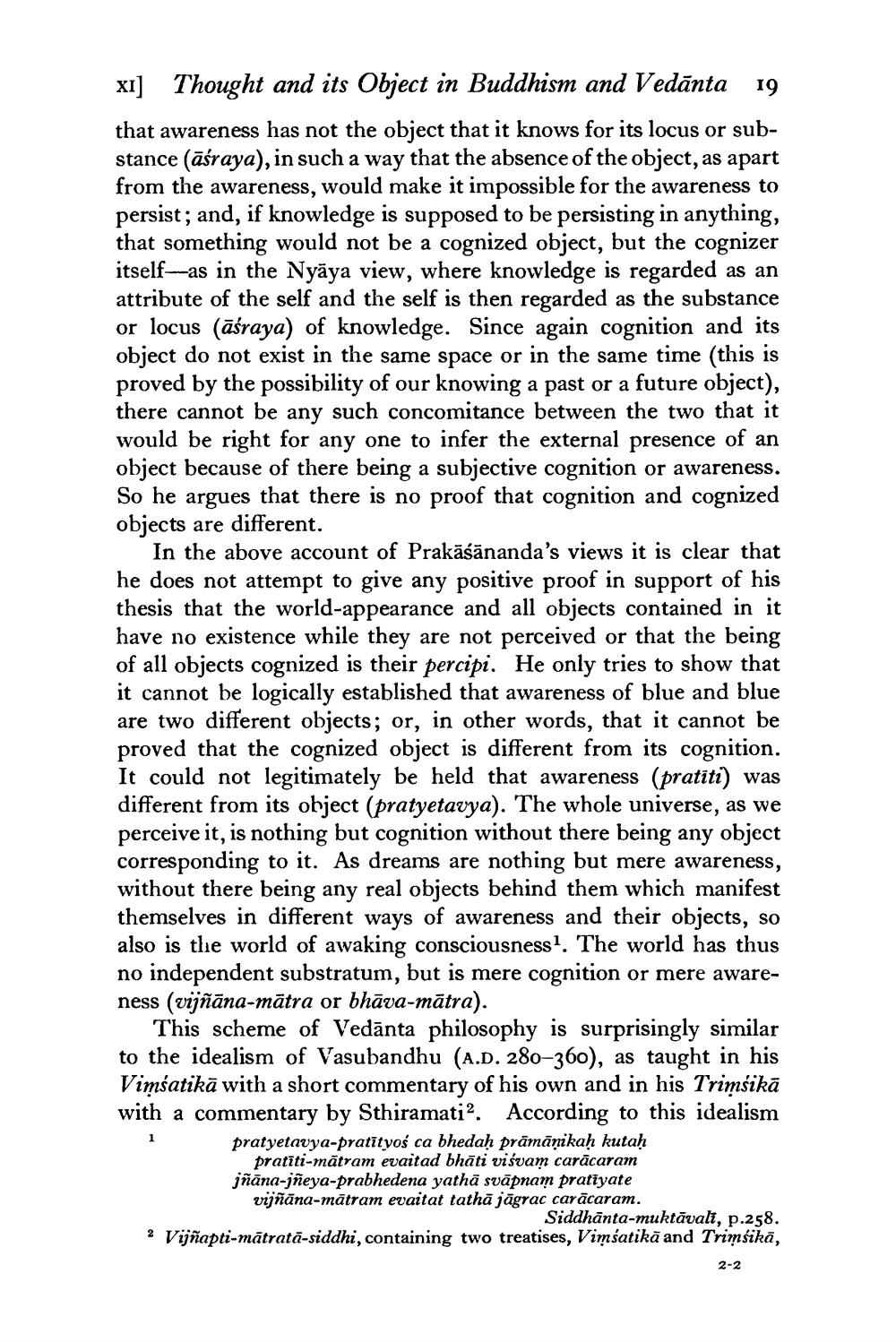________________
XI] Thought and its Object in Buddhism and Vedanta 19
that awareness has not the object that it knows for its locus or substance (āśraya), in such a way that the absence of the object, as apart from the awareness, would make it impossible for the awareness to persist; and, if knowledge is supposed to be persisting in anything, that something would not be a cognized object, but the cognizer itself as in the Nyaya view, where knowledge is regarded as an attribute of the self and the self is then regarded as the substance or locus (āśraya) of knowledge. Since again cognition and its object do not exist in the same space or in the same time (this is proved by the possibility of our knowing a past or a future object), there cannot be any such concomitance between the two that it would be right for any one to infer the external presence of an object because of there being a subjective cognition or awareness. So he argues that there is no proof that cognition and cognized objects are different.
In the above account of Prakāśānanda's views it is clear that he does not attempt to give any positive proof in support of his thesis that the world-appearance and all objects contained in it have no existence while they are not perceived or that the being of all objects cognized is their percipi. He only tries to show that it cannot be logically established that awareness of blue and blue are two different objects; or, in other words, that it cannot be proved that the cognized object is different from its cognition. It could not legitimately be held that awareness (pratiti) was different from its object (pratyetavya). The whole universe, as we perceive it, is nothing but cognition without there being any object corresponding to it. As dreams are nothing but mere awareness, without there being any real objects behind them which manifest themselves in different ways of awareness and their objects, so also is the world of awaking consciousness1. The world has thus no independent substratum, but is mere cognition or mere awareness (vijñāna-mātra or bhāva-mātra).
This scheme of Vedanta philosophy is surprisingly similar to the idealism of Vasubandhu (A.D. 280-360), as taught in his Vimsatikā with a short commentary of his own and in his Trimsikā with a commentary by Sthiramati2. According to this idealism pratyetavya-pratityoś ca bhedaḥ prāmāņikaḥ kutaḥ
1
pratiti-matram evaitad bhati visvam caracaram jñāna-jñeya-prabhedena yathā svāpnam pratīyate vijñāna-mātram evaitat tathā jāgrac carācaram.
Siddhanta-muktāvali, p.258.
2 Vijñapti-mātratā-siddhi, containing two treatises, Vimsatikā and Trimsikā,
2-2




